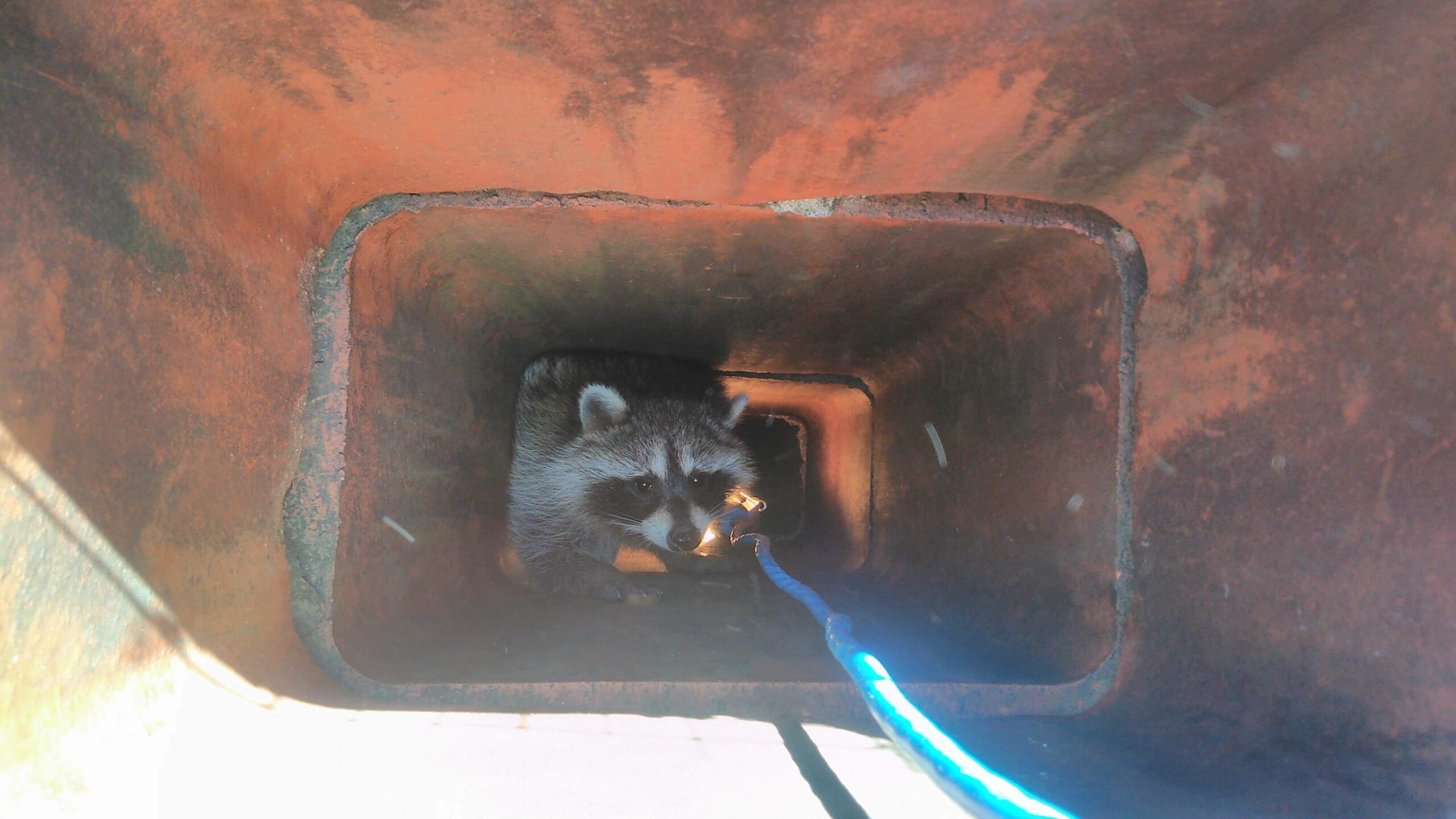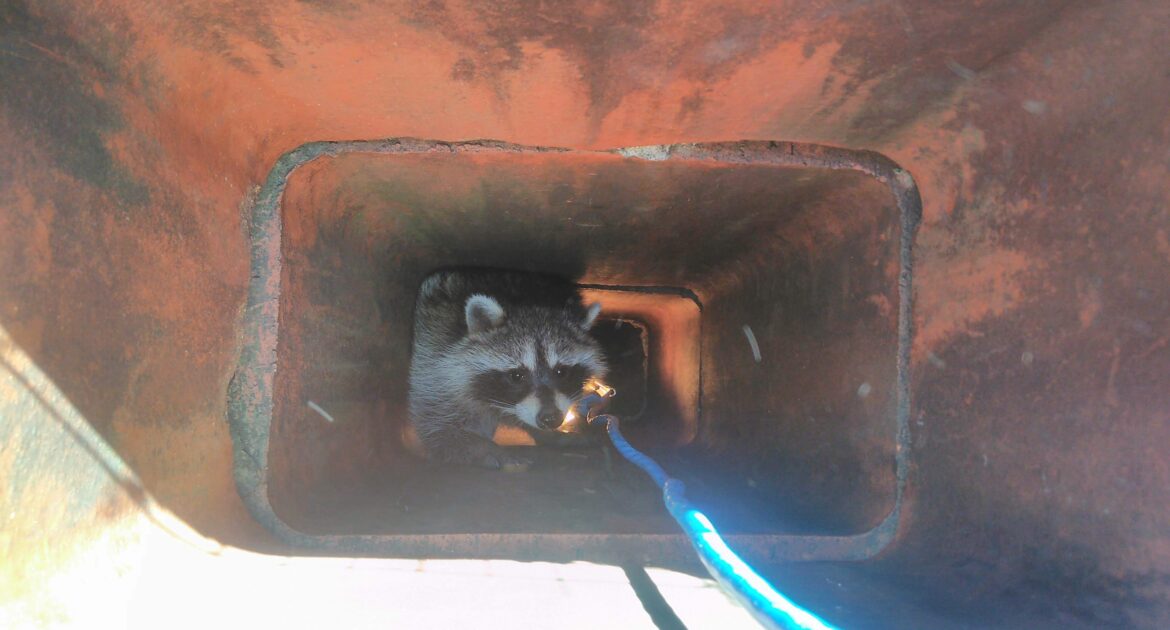You might never expect it, but your roof and chimney can be VIP entry points for raccoons. These animals are skilled climbers and always on the lookout for warm, dry spaces to nest. Once inside, they can cause a surprising amount of trouble—from damaging the structure to leaving behind harmful waste. But don’t worry, there are straightforward steps you can take to protect your home. The answer lies in raccoon-proofing your property with preventive measures like chimney cap installation and regular maintenance.
If you’re wondering how to get started, the key is identifying weak points on your roof and chimney and strengthening them before they become an issue. Adding protective elements like sturdy screens or caps can stop raccoons in their tracks. And if they’re already inside? Professional services like Skedaddle Humane Wildlife Control in Colorado specialize in humane wildlife removal in Lakewood to safely and effectively solve the problem.
We’ll walk you through why raccoons are drawn to homes, ways to safeguard your roof, and how to properly protect your chimney. By the end, you’ll have a clear game plan to keep raccoons and other animals out of your living space for good.
Why Raccoons Target Roofs and Chimneys
Have you ever wondered why raccoons aim for roofs and chimneys in the first place? It’s because these spots remind them of their natural habitat.
Chimneys mimic hollow tree trunks, which just happen to be one of their favorite hiding spots in the wild. For a raccoon, a chimney feels like a warm, safe enclosure where they can rest or even raise their young. Loose shingles, roof vents, and soffits can also provide easy access points. If you’ve got food left sitting outdoors—like unsecured trash cans or pet bowls—you’re making your space even more attractive to them.
Raccoons aren’t just opportunistic; they’re determined. Once they’ve found a cozy spot in your chimney or a way onto your roof, they’re no strangers to tearing apart weak materials to get inside. This could mean serious damage to your home if left unaddressed.
Understanding what draws these animals to your roof makes it easier to stop them. With the right precautions in place, you can prevent them from making themselves at home.
Ways to Secure Your Roof Against Raccoons
Raccoons are crafty climbers, and roofs are often their first stop. Thankfully, there are several ways to protect this part of your home from becoming their playground.
- Inspect and Repair Weak Spots: One of the first steps is to perform a close inspection of your roof. Look for loose or missing shingles, gaps near vents, or damaged soffits. Any of these could be an entry point. If you find holes or soft spots, seal and reinforce them as soon as possible. Ignoring these weak spots only makes it easier for raccoons to invade.
- Install Sturdy Roof Vent Covers: Vents are essential for proper airflow, but thin covers made of plastic or aluminum won’t stand up to a determined animal. Replacing these with steel mesh or reinforced vent covers is a simple way to stop raccoons from prying their way inside. This small upgrade can make a big difference.
- Trim Tree Branches Near the Roof: Do you have overhanging branches near your roof? These act like ladders for raccoons, giving them direct access. By trimming branches so they’re at least 6 to 8 feet away from your home, you make it much harder for these climbers to reach your roof in the first place.
- Secure Roof Edges and Soffits: The edges of your roof can sometimes have gaps or loosen over time. Raccoons are strong enough to exploit these weak spots, so it’s worth reinforcing them. Install durable metal flashing along the edges and secure soffits with screws or additional brackets. This creates a sturdy barrier that’s harder to break through.
A strong, well-maintained roof is your first defense against raccoon problems. With these steps, you’re not just protecting your property—you’re also saving yourself time and money in the long run.
How to Protect Your Chimney from Raccoons
Chimneys can be a prime target for raccoons looking for somewhere to nest, but taking a few smart steps can make all the difference. One of the easiest and most effective solutions is a chimney cap installation. A well-made stainless steel cap with a mesh screen acts as a barrier, keeping raccoons and other animals out while letting smoke escape safely. It’s important to make sure the cap is securely fastened so it stays put, even if a raccoon tries to mess with it.
If you suspect there’s already a raccoon inside, it’s crucial to handle the situation carefully. Don’t light a fire in hopes of getting rid of it—it’s dangerous for both you and the animal. Calling a professional for help ensures the problem is taken care of safely and humanely. Experts like our team in Lakewood can safely evict wildlife and check for any signs of damage or nests.
For chimneys that are no longer in use, sealing them off entirely can save you a lot of trouble in the future. By closing off the opening, you prevent any animals from moving in and creating new problems. It’s a simple way to eliminate the risk altogether.
By taking these steps, you’re making sure your chimney stays off-limits to unwanted guests. A few preventive measures today will leave you with one less thing to worry about down the road!
How We Can Help
Raccoons are clever animals that can cause real damage if they manage to get into your roof or chimney. Luckily, taking steps like raccoon-proofing with chimney cap installation and adding reinforced vents can make all the difference in keeping them out. These simple actions can save you from expensive repairs and health risks.
If you’re already dealing with a raccoon issue, Skedaddle Humane Wildlife Control in Lakewood can help. We specialize in safe and humane wildlife removal, giving you peace of mind while protecting your home. Don’t wait—contact us today to request a quote or learn more about our raccoon-proofing services. Your home deserves to stay safe and secure!




